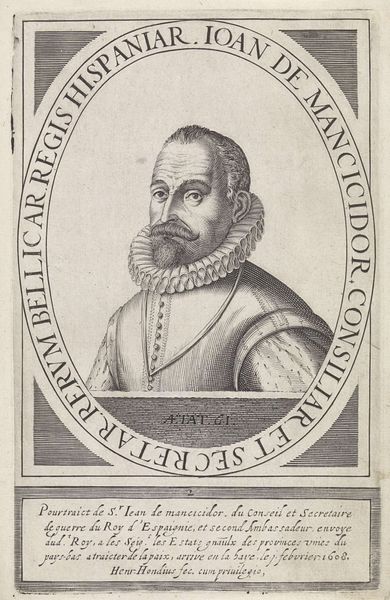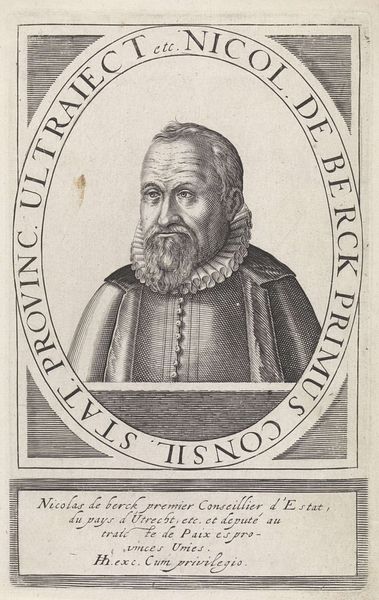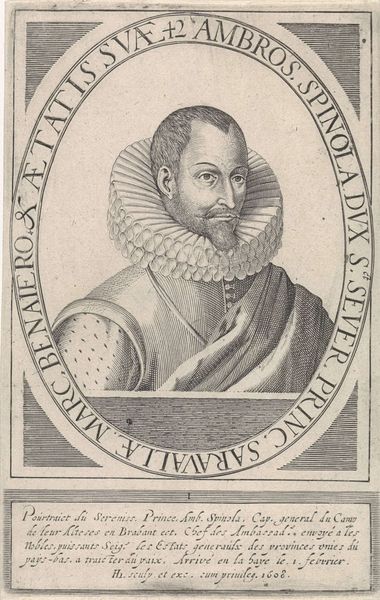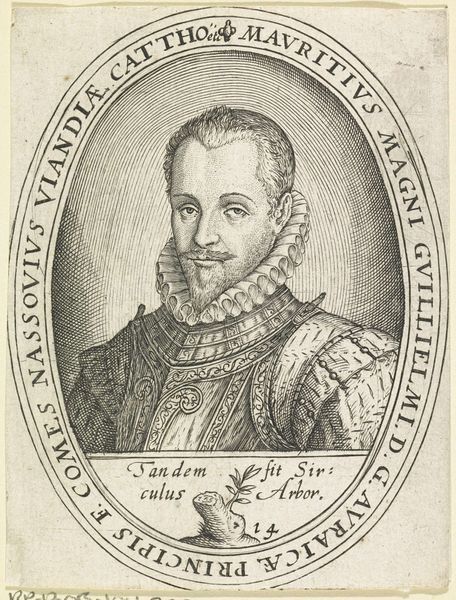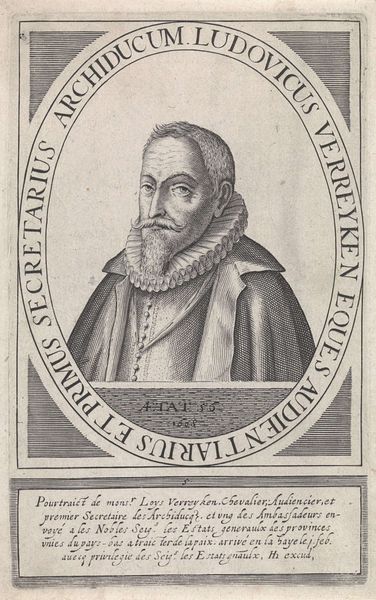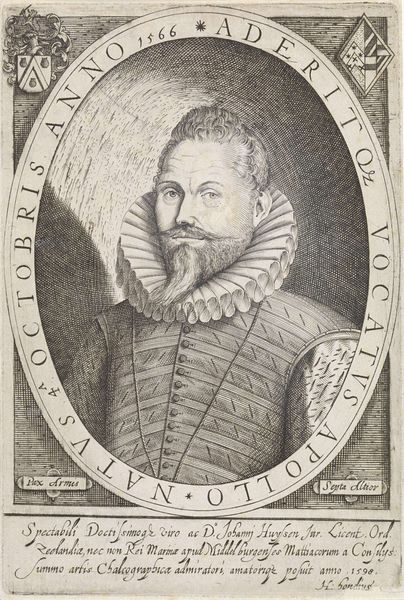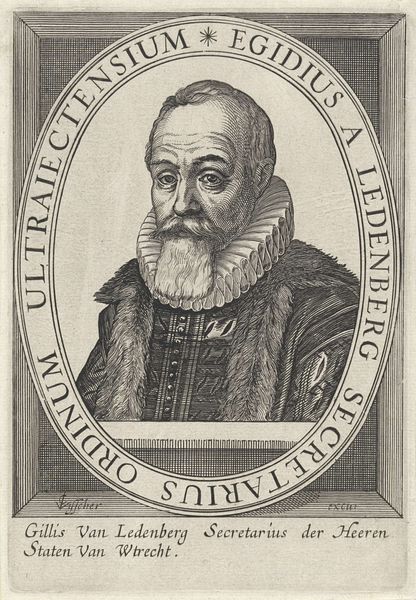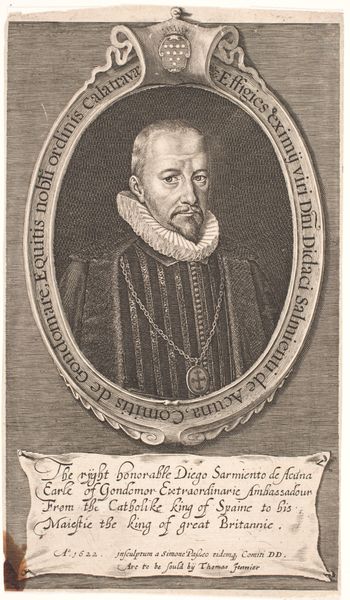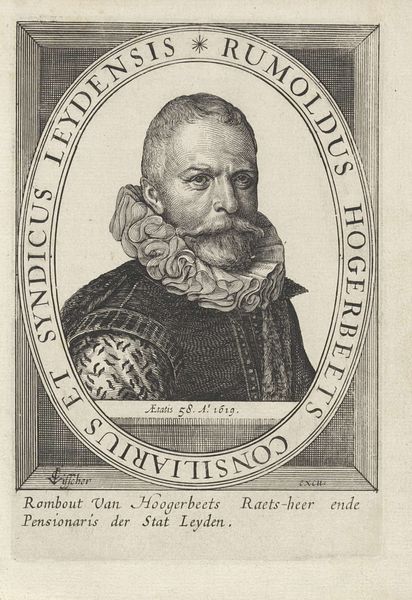
print, engraving
#
portrait
#
baroque
#
dutch-golden-age
# print
#
northern-renaissance
#
engraving
Dimensions: height 190 mm, width 123 mm
Copyright: Rijks Museum: Open Domain
Editor: Here we have Hendrick Hondius I’s 1608 engraving, a portrait of Johan van Oldenbarnevelt, currently housed in the Rijksmuseum. It's amazing how much detail they were able to get with just lines! What do you find most striking about this piece? Curator: Well, I immediately consider the economic context surrounding printmaking at this time. Prints democratized portraiture. Before, only the wealthy could afford painted likenesses. Now, engraved images like this circulated more widely. Editor: So the material, being a print, influenced who could access the image? Curator: Precisely! The means of production affected its consumption. Look closer at the paper itself, likely mass-produced. This suggests a burgeoning industry catering to a broader public eager for imagery, a departure from unique, commissioned artworks. What about the texture and technique? Editor: You can see the tiny lines etched into the metal plate in order to transfer the image onto the paper. It's labour intensive! And it was one of multiple identical copies... Curator: Exactly! Think about the craftsman Hondius. He's not just an "artist," he's a skilled laborer participating in a network of printers, distributors, and consumers. The act of engraving becomes almost a manufacturing process, doesn't it? Does this perspective change your appreciation of the portrait? Editor: It definitely does. Seeing it less as a precious object and more as a product of its time… that adds a layer of meaning I hadn't considered before. Thanks for sharing that perspective. Curator: And for me, thinking about art through that lens allows a more inclusive vision, focusing less on "genius" and more on labor, material access and the democratization of the art experience.
Comments
No comments
Be the first to comment and join the conversation on the ultimate creative platform.
